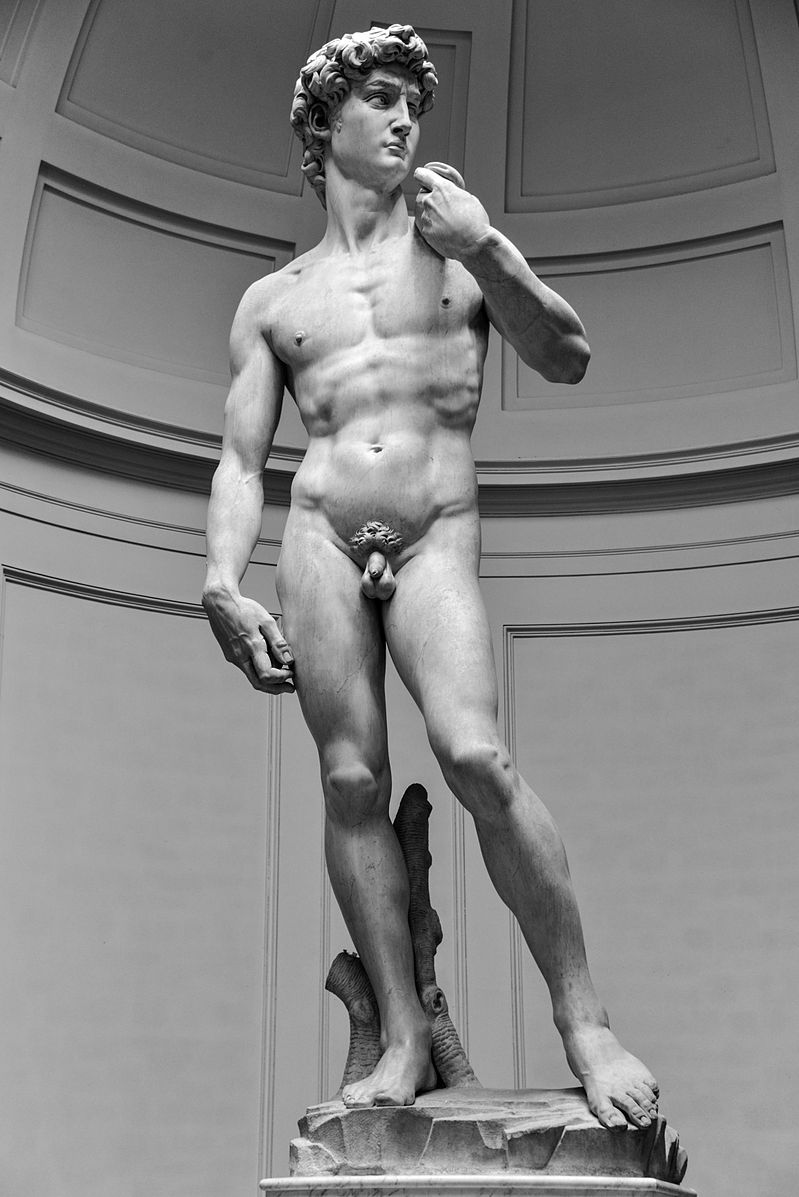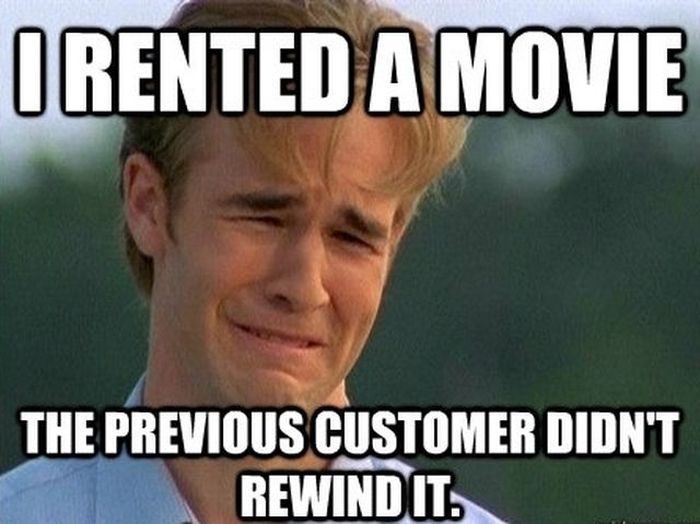A Rumination on Walter Benjamin: Auras and Memes (assignment 1, part 1)
In Walter Benjamin's 1935 essay, "The Work of Art in the Age of Mechanical Reproduction," he laments the loss of the "aura" of works of art, essentially the uniqueness and irreproducibility of not just the art itself, but also its place in space and time. For example, traveling to Italy to see Michelangelo's original statue of David produces a different experience from seeing a reproduction in your local museum or from looking at a picture of the statue from the comfort of your living room. Benjamin argues that the "aura," in this case of the statue of David, would be made up of a combination of (1) imperfections on the statue due to its great age, (2) the knowledge that it was carved over 500 years ago (and the knowledge of what that time period was like, which presumably the viewer has learned in history classes), (3) using your own two eyes to see the statue, to walk around it, to look at it from different angles, just as people of that time would have been able to view it, and (4) being in Italy and thus conserving that sense of "authenticity." In contrast, even a faithful marble-carved reproduction lacks all of that history that the original has; a photograph, even worse by Benjamin's standards, fundamentally alters the way you see the statue, because you're not only losing point 4 above, you're also viewing it through someone else's lens and viewpoint.
What, then, would Benjamin make of the internet? Of cell phone cameras? One thing that seems fundamentally unique to the internet age is memes. What would he think of memes? You know what I mean: there's an image, sometimes a photograph taken out of context, sometimes a cartoon or illustration, and text is written on top/bottom of the image with a caption. In the following meme, known as "Bad Luck Brian," words are superimposed on someone's yearbook photo. This meme is all about embarrassing moments, presumably due to the awkwardness of the photo.
Talk about losing the aura of the original: the kid's name is actually Kyle, not Brian, and apparently this was a photo he took for his seventh grade yearbook, but his teacher made him retake it because he thought he was making a silly face on purpose. All of that is swept aside for the purposes of meme-ifying the image. It's not that the aura is lost, it's that we don't care about the aura of the original, because we want to re-use it for our own purposes.
The "Dawson Crying" meme takes it a step further. The still image is from an episode of Dawson's Creek, a TV show, meaning that we're getting the images filtered through not just a camera lens, but also a director's specific preference for angle, lighting, etc. So we've already lost the aura of the original real-life situation anyway, which was presumably a sound stage filled with dozens of people standing on the side lines watching silently while James Van Der Beek pretended to cry into a camera or cameras pointed at him. That original aura was swapped for the aura the director wants you to take away from this moment, which is that the character Dawson is absolutely devastated that the girl he's in love with wants to be with someone else. But then, enter the meme:
The meme once again disregards both auras completely. It's not that the internet isn't aware of the real aura and the fake one, it's that we just don't care about either one at all. Instead, this meme is typically used to sarcastically show remorse or (as in the example I've used here) to show humorous instances of real-life things that are mildly annoying (kind of an overly dramatic "O, woe is me").
But wait, it gets better: Van Der Beek then created a new video of himself purposely recreating the scene for the purposes of meme-ifying it.
So, just to recap, we have:
Back when Benjamin wrote his famous essay, he had no way of knowing how many steps removed things would end up getting in the era of the internet. Would his head explode trying to figure out what's authentic and what's inauthentic in the age of memes? (Does yours feel like it's going to, too?)
Talk about losing the aura of the original: the kid's name is actually Kyle, not Brian, and apparently this was a photo he took for his seventh grade yearbook, but his teacher made him retake it because he thought he was making a silly face on purpose. All of that is swept aside for the purposes of meme-ifying the image. It's not that the aura is lost, it's that we don't care about the aura of the original, because we want to re-use it for our own purposes.
The "Dawson Crying" meme takes it a step further. The still image is from an episode of Dawson's Creek, a TV show, meaning that we're getting the images filtered through not just a camera lens, but also a director's specific preference for angle, lighting, etc. So we've already lost the aura of the original real-life situation anyway, which was presumably a sound stage filled with dozens of people standing on the side lines watching silently while James Van Der Beek pretended to cry into a camera or cameras pointed at him. That original aura was swapped for the aura the director wants you to take away from this moment, which is that the character Dawson is absolutely devastated that the girl he's in love with wants to be with someone else. But then, enter the meme:
The meme once again disregards both auras completely. It's not that the internet isn't aware of the real aura and the fake one, it's that we just don't care about either one at all. Instead, this meme is typically used to sarcastically show remorse or (as in the example I've used here) to show humorous instances of real-life things that are mildly annoying (kind of an overly dramatic "O, woe is me").
But wait, it gets better: Van Der Beek then created a new video of himself purposely recreating the scene for the purposes of meme-ifying it.
So, just to recap, we have:
- The original clip
- Its authentic aura, which is an actor surrounded by silent watchers, crying into a camera
- Its projected aura, which is a character in real distress
- The meme
- Its self-identified aura, which is a sarcastic kind of self-ironic tone
- All of which is being delivered through each individual's computer screen to them, wherever they are
- The new clip
- Its authentic aura, which is an actor surrounded by presumably laughing watchers, purposely over-the-top crying into a camera
- Keeping in mind that the actor probably had to watch the clip of himself crying over and over to be able to mimic it so well, so even this "authentic" aura is actually inauthentic anyway
- Its projected aura, which is the actor making fun of his own clip for the purposes of it being further meme-ified
- Its new aura, which is a meme about a meme
- All of which is being delivered through each individual's computer screen to them, wherever they are
Back when Benjamin wrote his famous essay, he had no way of knowing how many steps removed things would end up getting in the era of the internet. Would his head explode trying to figure out what's authentic and what's inauthentic in the age of memes? (Does yours feel like it's going to, too?)




Comments
Post a Comment